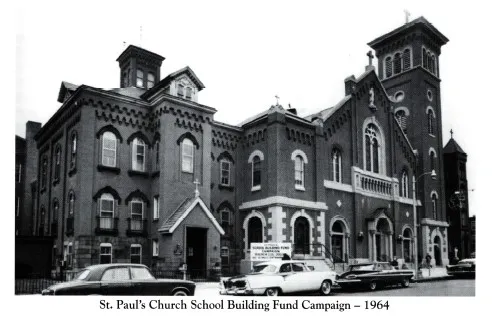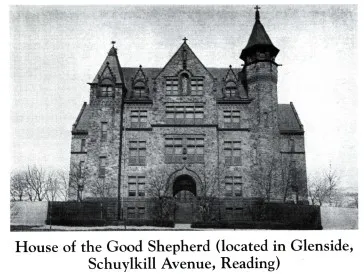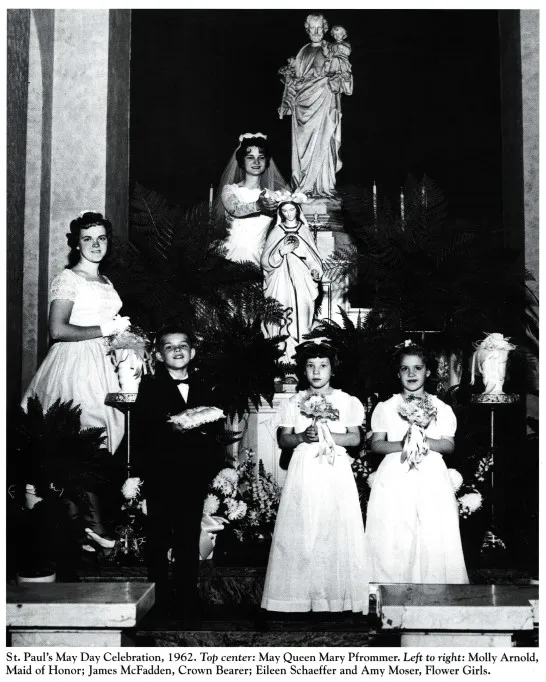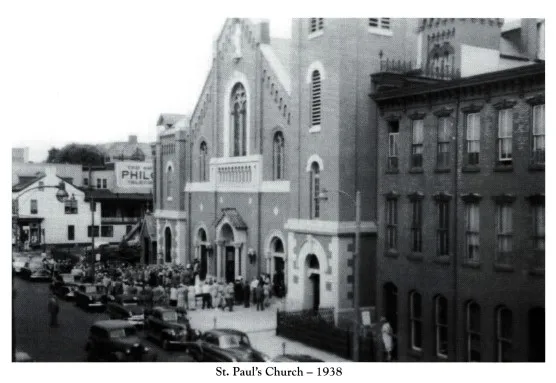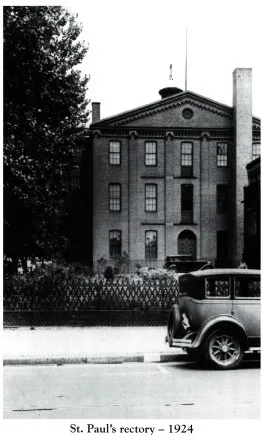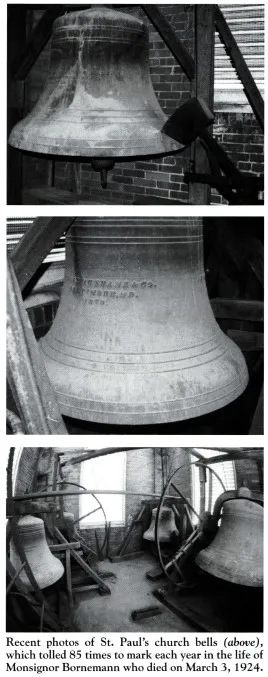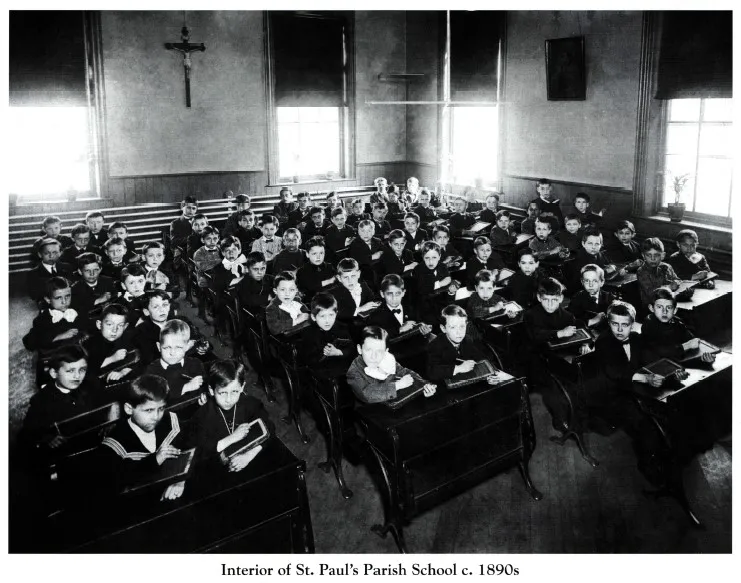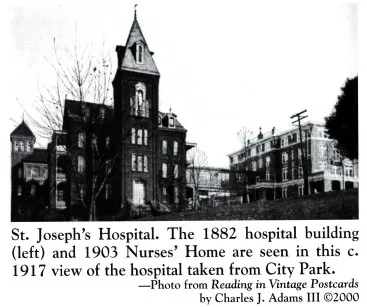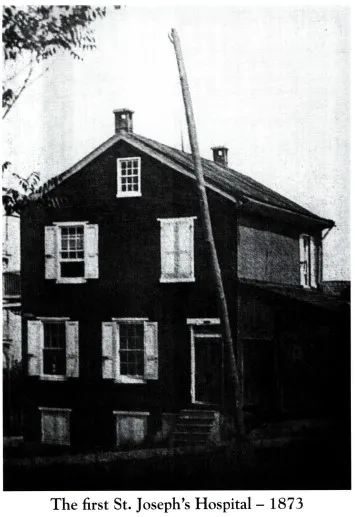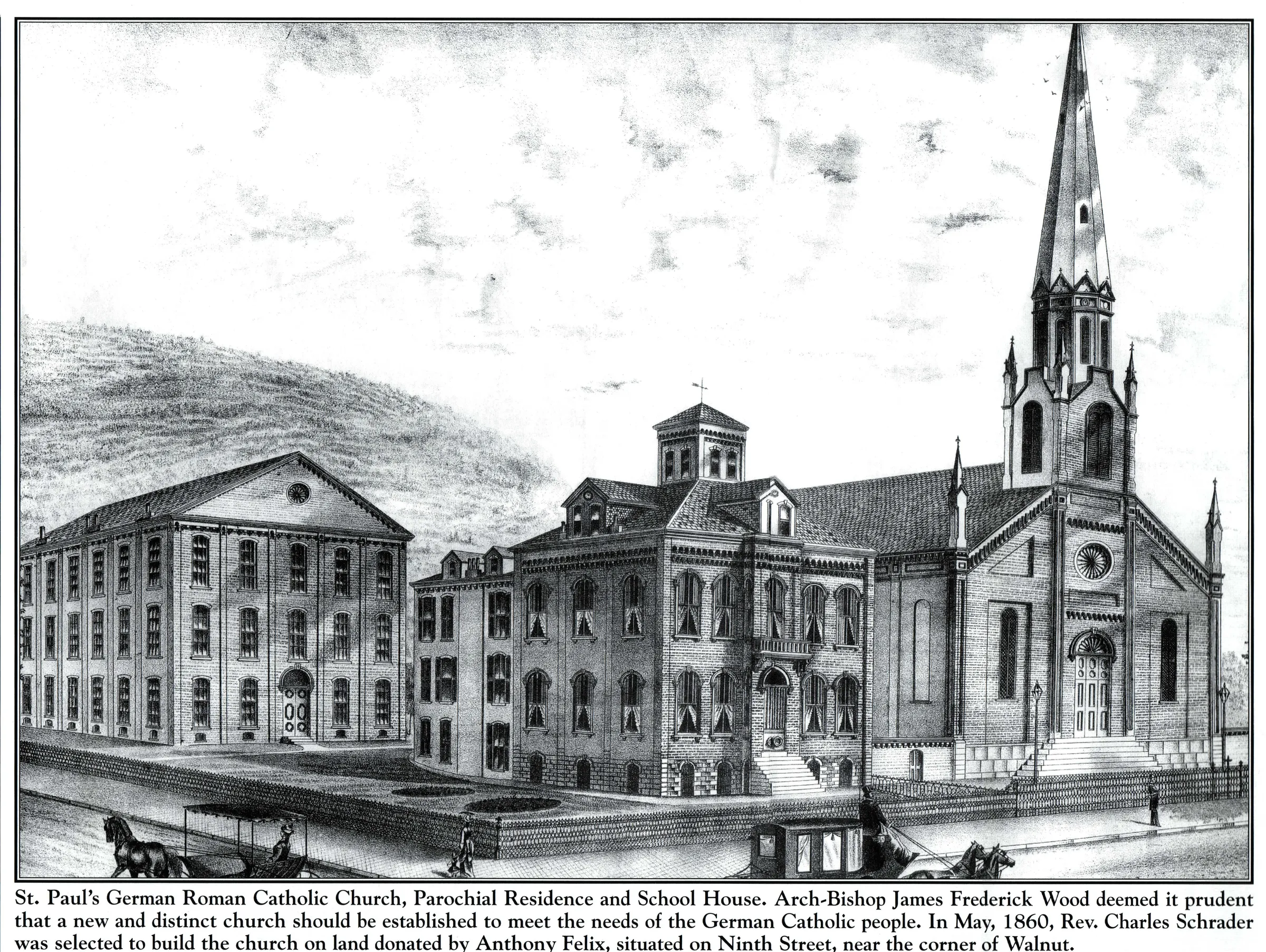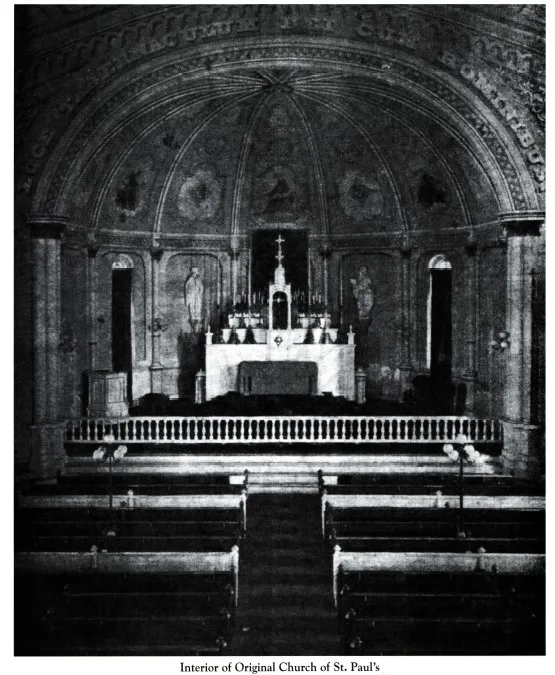Building the Reading Church
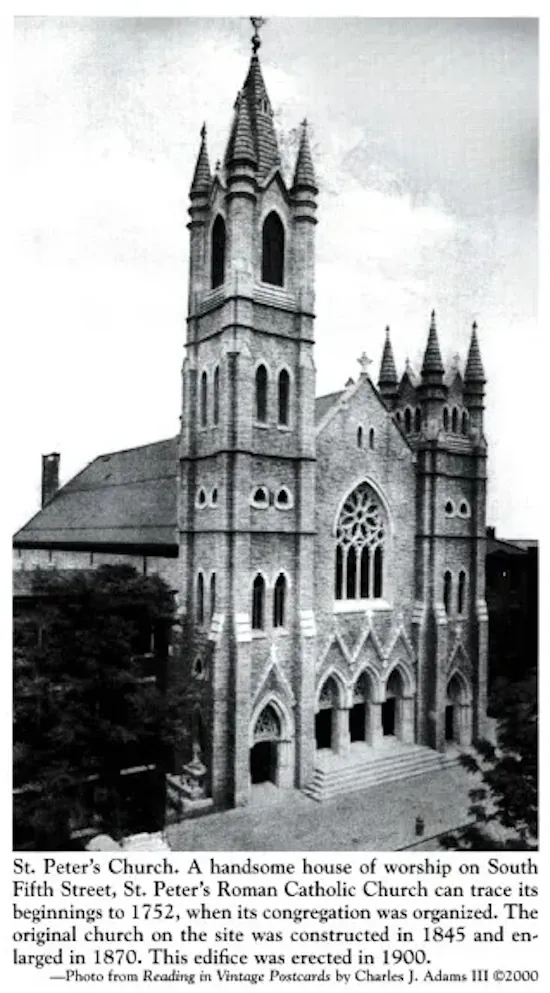
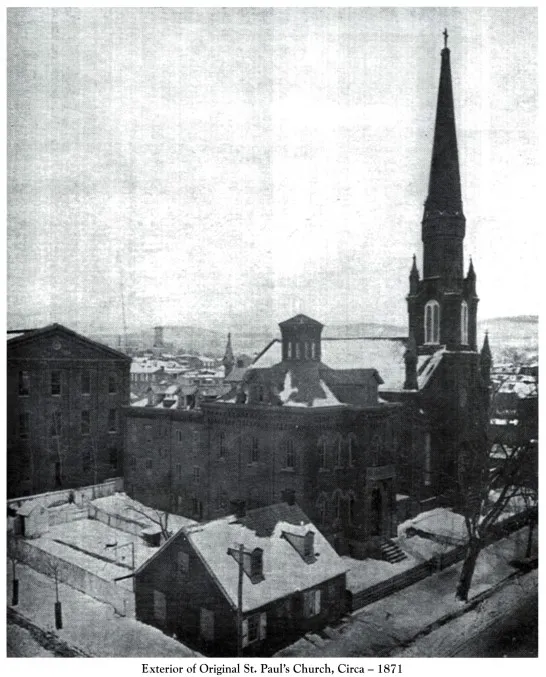
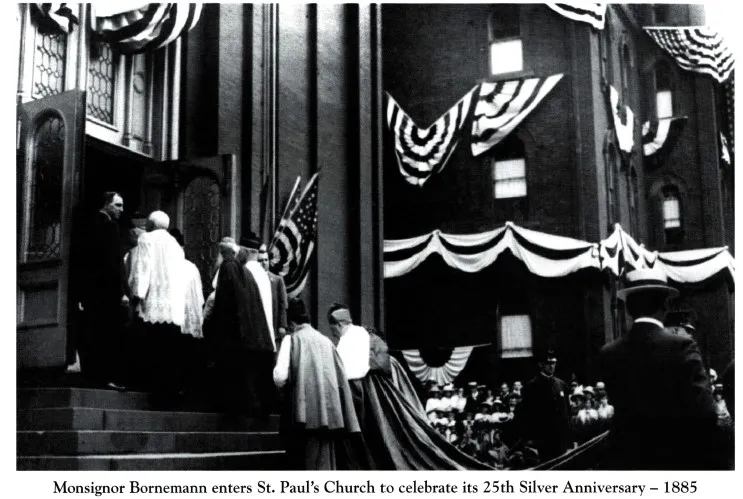

A Historical Landmark in Reading
The church of St. Paul, of Romanesque architectural design, is constructed of red brick with buttressed walls reinforced with steel throughout. The vestibule of the church is very large and extends the full width of the building. Concealed radiation, enclosed in marble casements, is an attractive, as well as practical feature. Three massive double oak doors give entrance directly from Ninth Street. At each end of the spacious vestibule, wide easy stairways lead to the gallery or choir loft, where pews are installed for additional worshippers who are unable to gain access to the church proper. In the oak paneled gallery is located the organ which furnishes the music for divine services. An oak front casement screens the organ and louvers that control the tone volume. The large mission crucifix, formerly in the old church, is affixed to the center of the panel screening. Between the console and the organ, there is a large space which the choir occupies at High Mass. From the vestibule, four marble steps lead directly into the main auditorium of the church. Immediately upon entrance, one is struck with the devotional atmosphere that prevails in the well-lighted and beautiful church. The nave of the auditorium is fifty-five by one hundred and twelve feet, with high vaulted ceiling into which is constructed a gravity system of ventilation. The interior of the building is in High Renaissance, based on Pompeian. It belongs to the sixteenth century and typical prototypes of this style ornamentation are found in the Villa Madam outside Rome, by Raphael and Julio Romano. Also, the Loggia, as well as several of the other rooms of the Vatican are also done in this design.

Expansion and Growth of St. Paul’s

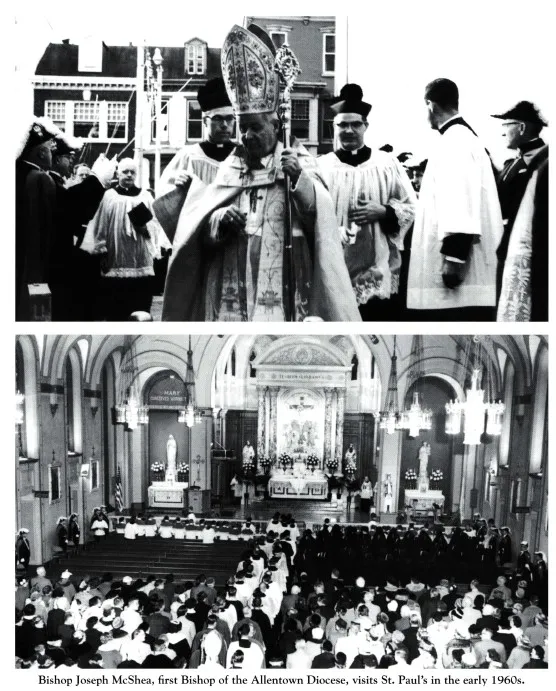
St. Paul’s has an extensive history of serving Christ and the Reading, PA community.
Through decades of change, the essence of St. Paul’s remains unchanged: a place where faith, culture, and community intertwine. We celebrate that enduring legacy through historical photography, capturing moments that tell the story of St. Paul’s through the years. Each photograph is a window into the past, offering a glimpse of the milestones, the everyday life, and the extraordinary events that have shaped the church and its community. From the laying of the cornerstone in 1860 to the vibrant multicultural celebrations of today, these images invite you to explore the rich history of St. Paul and its ongoing journey of faith, service, and community.
St. Paul’s Church Today
